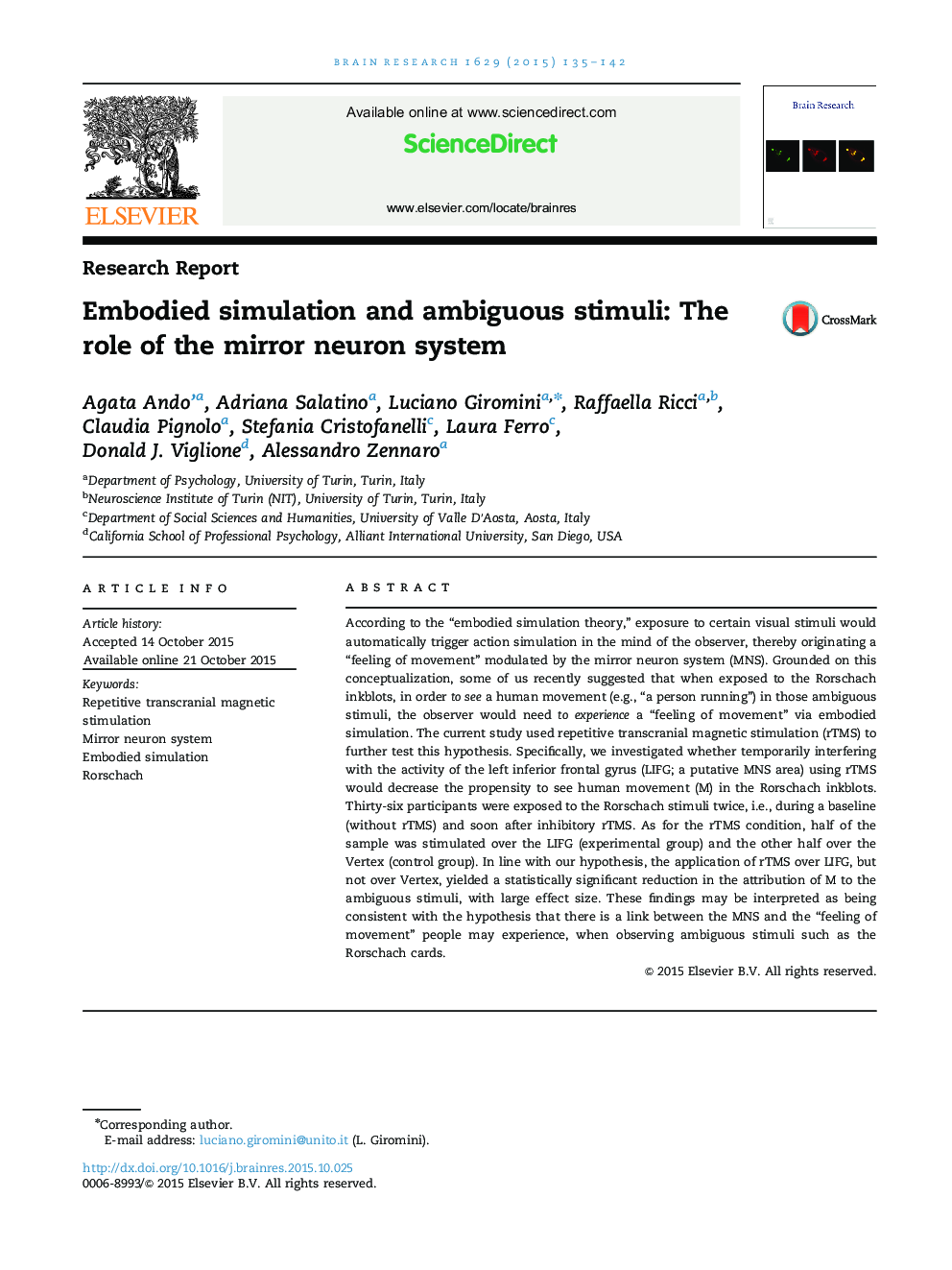| کد مقاله | کد نشریه | سال انتشار | مقاله انگلیسی | نسخه تمام متن |
|---|---|---|---|---|
| 6262773 | 1645516 | 2015 | 8 صفحه PDF | دانلود رایگان |
- Thirty-six subjects were exposed to ambiguous inkblot stimuli before and during rTMS.
- During rTMS, half of the sample was stimulated over LIFG, half over Vertex.
- Interfering with LIFG decreased the attribution of human movement to the stimuli.
- LIFG is presumed to be implicated in mirroring and embodied simulation.
- Results support that action and perception are integrated components of a same system.
According to the “embodied simulation theory,” exposure to certain visual stimuli would automatically trigger action simulation in the mind of the observer, thereby originating a “feeling of movement” modulated by the mirror neuron system (MNS). Grounded on this conceptualization, some of us recently suggested that when exposed to the Rorschach inkblots, in order to see a human movement (e.g., “a person running”) in those ambiguous stimuli, the observer would need to experience a “feeling of movement” via embodied simulation. The current study used repetitive transcranial magnetic stimulation (rTMS) to further test this hypothesis. Specifically, we investigated whether temporarily interfering with the activity of the left inferior frontal gyrus (LIFG; a putative MNS area) using rTMS would decrease the propensity to see human movement (M) in the Rorschach inkblots. Thirty-six participants were exposed to the Rorschach stimuli twice, i.e., during a baseline (without rTMS) and soon after inhibitory rTMS. As for the rTMS condition, half of the sample was stimulated over the LIFG (experimental group) and the other half over the Vertex (control group). In line with our hypothesis, the application of rTMS over LIFG, but not over Vertex, yielded a statistically significant reduction in the attribution of M to the ambiguous stimuli, with large effect size. These findings may be interpreted as being consistent with the hypothesis that there is a link between the MNS and the “feeling of movement” people may experience, when observing ambiguous stimuli such as the Rorschach cards.
Journal: Brain Research - Volume 1629, 10 December 2015, Pages 135-142
